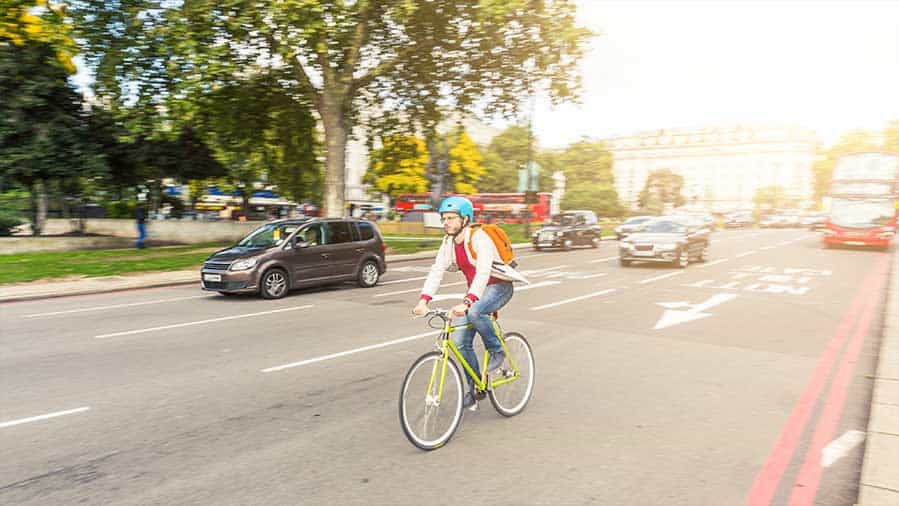
How To Become A Bike Commuter
Cycling is a great way to get exercise, do something good for the environment, and save money on fuel. And commuting by bike might just be the best way to do all three of those things!
Many people aspire to bike to work. It’s a great goal.But riding your bike to work the first time can be a bit intimidating.
So we’ve put together this complete guide to bike commuting: it’ll tell you what to expect from your commuting, the equipment you need, things to consider, safety considerations, and a whole lot more.
Whether you’re a long-time cyclist or a new convert to the hobby, we’ll walk you through all the information you need.
No matter how experienced you are, you can take advantage of the awesome benefits of bike commuting and join a fun, committed, and energetic community of like-minded commuters.
Let’s get started!
The Benefits of Cycling To Work
You probably already know some of the benefits of commuting by bike. But in case you don’t, we’ll go over a few of the biggest ones here.
If you aren’t convinced yet that biking to work is a good idea, Read on!
It’s good for your health...
Cycling is a great form of exercise, and commuting means you’re riding your bike twice a day. Even if you only ride ten minutes each way, that adds up to a lot of exercise!
A recent study found that cycling to work was linked with significant health benefits, including decreased risks of death, cardiovascular disease, and cancer.
including your mental health
Cycling has actually been shown to be good for your brain, too. It increases the number of important connections, relieves stress, releases beneficial neurochemicals, increases blood flow to the brain, and all sorts of other great things.
Think of how you feel when you get work after sitting in traffic—probably not very happy. Getting there by bike could completely change how you start your day.
You’re saving the environment
Your daily commute puts a ton of carbon dioxide into the air—literally.
A mid-size car releases 1.3 tons of CO2 over a year on a 10-mile commute. If you’re commuting farther than that or driving something larger, that number is even higher.
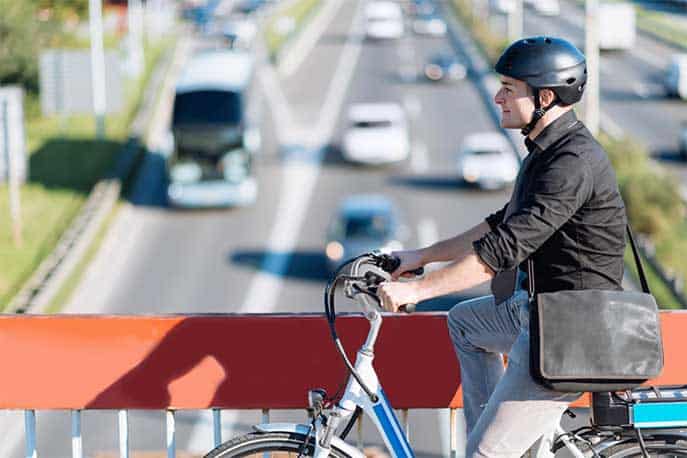
Cycling to work, even if only a couple days a week, removes a huge amount of greenhouse gases and harmful chemicals from the air.
Cycling doesn’t contribute to traffic
Many cities have serious traffic problems. Big metropolitan areas like LA, New York, Atlanta, Minneapolis, and Denver are terrible places to commute by car. Not only does riding a bike to work help you skip that traffic, but it also lessens the traffic burden on other people. It’s good for everyone!
Bike commuting saves money
Cars are expensive to buy, insure, maintain, and drive. And while you can spend a lot of money on bikes and accessories, the cost is negligible in comparison.
You can use a fuel-cost estimator to figure out how much you’re spending on gas—and then drop that cost to $0 for cycling (though there are some maintenance and upkeep costs).
If you want to see how much cheaper a bike really is, check out the Owning a Car vs. Not Owning a Car Calculator.
You might be surprised.
You could get paid to bike to work
If your bike is your primary mode of transport to get to work, you might be able to get some cash for it.
The Bicycle Commuter Act allows for employers to pay bike commuters $20 per month in non-taxable income for biking to work. It’s not much, but it certainly helps! And tax-free income is always good.
Unfortunately, your employer has to opt in to this program, and the restrictions are a bit tight.
Check out the League of American Bicyclists’ explanation of the benefit to learn more.
Busting Some Common Myths
While biking to work sounds great in theory to a lot of people, there are a few things that keep them from jumping on their bike and getting started. A lot of those fears, however, are unfounded.
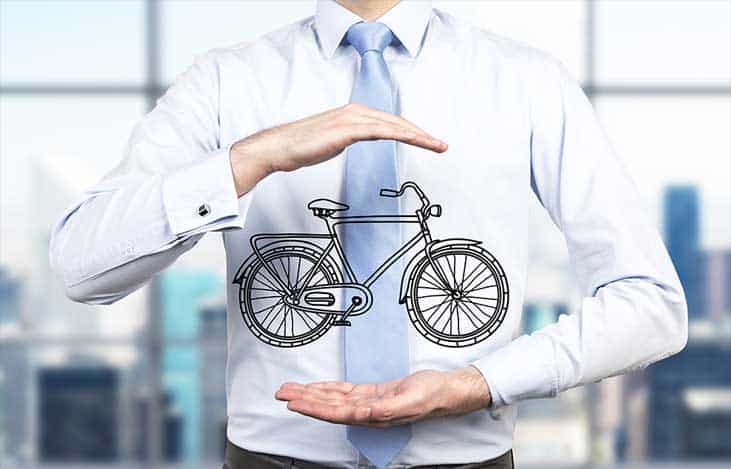
Here are a few myths that might be keeping you from biking to work, and the reasons you shouldn’t be afraid:
Riding in traffic is dangerous
Sure, riding in traffic is more dangerous than riding on a bike path, but cycling is remarkably safe. In 2015, 818 cyclists were killed while riding in the United States. While this might seem like a lot, consider that over 5,000 pedestrians were killed while walking.
The Pedestrian and Bicycle Information Center also notes that nighttime riding, specific locations, and alcohol use can all make riding more dangerous.
In general, riding your bike—even in traffic—is very safe.
By taking the proper precautions, like using bright lights (even during the day), signalling your turns, and choosing safer roads with bike lanes or shoulders, you can ensure that your ride to work is safe.
And, of course, you should always wear a helmet, no matter the conditions you’re cycling in. REI has a great resource with tips for beginners on riding in traffic; be sure to check it out before you start your commute.
You need to shower at work
While very bike-friendly workplaces will offer employee showers, this is a rather rare perk. But that doesn’t mean you can’t bike to work! It also doesn’t mean you have to arrive at work all sweaty. It just takes a bit more planning.
For example,,,,
You’ll want to leave earlier in the morning so the temperatures are lower. You’ll also want to wear very breathable clothes, even on cooler days, to keep your body temperature down. It’s a good idea to get some panniers or a rack so you don’t have to wear a backpack or messenger bag, which will make your back sweaty.
You can also adopt some of the methods of long-time bike commuters, like carrying baby wipes to freshen yourself up before you head to your desk. You might even be able to commute without changing clothes once you get to work; that’ll save you a lot of time.
Thinking more about your route to work is a good idea, too.
If you can find an alternate route that lets you go slower and stay away from traffic, you’ll expend less energy and create less heat. It might take a bit longer, but it’s worth it to keep riding your bike! some effective tips if you're thinking about commuting with kids.
You need a commuter bike
Think your bike isn’t the right kind for commuting? Think again! You can use absolutely any type of bike to commute. From a purpose-built folding commuter bike to a full-suspension mountain rig.
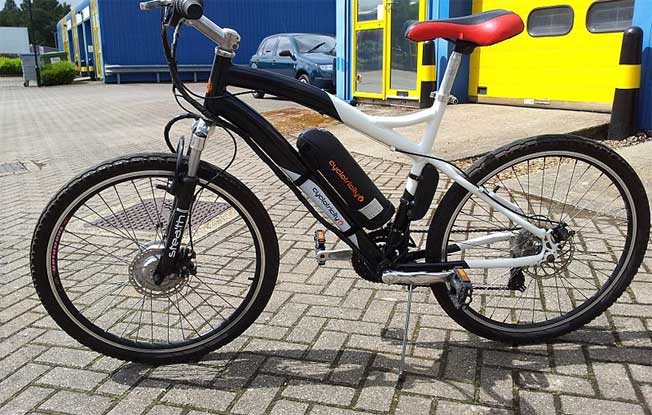
Of course, using something road-friendly is going to be helpful. But it isn’t necessary. You can commute on any bike, and whatever type you have is the best one for you, because it’ll get you riding.
We’ll talk in a moment about the kinds of accessories that you’ll want, but for now, don’t worry about it.
Just know that your bike can definitely be a commuter.
It takes a long time
Some people think that you need a couple extra hours each day if you’re going to commute by bike.
In some cases, that might be true. It depends on where you live and work.
But many people find that cycling doesn’t add much time to their commute. They can use bike paths that skirt main roads, ride through bad city traffic, and don’t have to worry as much about parking.
In fact, some people actually save time by cycling to work!
Your best bet is to use a cycling map like MapMyRide to estimate how long it will take you to get to work on your bike. You should also ride the route once or twice on a weekend or holiday to see how long it will take you. Just remember that traffic might slow you down a bit.
You live too far away
No matter how far you live from your workplace, there’s a way you can bike to work. Maybe you can trade your bike in for something more efficient—some people use e-bikes to get to work faster and with less effort.
Upgrading to a road bike instead of your hybrid could help you cover more distance in the same amount of time.Don’t forget that you can combine bike commuting with other methods of transportation, too!
If you can bike to a bus or train, or take one into the city and bike from there, you’ll be taking advantage of two environmentally friendly commuting alternatives.
Here is our productive commuting tips, in case if you were thinking. And even if it takes a little longer, isn’t that something worth doing?
Folding bikes are especially good for multi modal commuters. We’ll talk about that in a moment.
Turning Your Bike into a Commuter
The best commuting bike, hands-down, is the one you already have. If you have a bike that you ride, it’s a perfect commuter. That’s really the most important criteria. Any bike will work.
There are a few things to keep in mind if you want to use your bike as a commuter, though. Here’s what you need to know about commuting on different types of bikes:
Commuting on a Hybrid Bike
Hybrid bikes are perfect for commuting; in fact, most bikes that are specifically marketed as commuters are hybrids of one type or another. Their large wheels, roadworthy tires, relaxed geometry, and suitability for accessories make them great choices.
If you have a hybrid, turning it into a commuter probably only requires that you get a rack and some panniers (which we’ll discuss in the following section on accessories). Most hybrids come with tires that are efficient on the road but provide a bit more grip than standard road tires, which is perfect for commuting in different types of weather. In short, if you have a hybrid, you’re ready to rock.
Commuting on a Road bike
While road bikes aren’t quite as commute-ready as hybrids, they can make fantastic commuters. Especially if you’re riding more than five or ten miles. Their light weight and focus on speed means you’ll get to work in the minimum amount of time.
However, road bikes aren’t generally made for carrying things. You might need to find a special kind of rack that works with your bike (though many entry-level road bikes come with rack mounts). The riding position on a road bike might also be bad for carrying a backpack (though it’s best to avoid that anyway).
Investing in wider tires that have a small amount of tread is also a good idea if you’re commuting on a road bike. Bike Friendly Oak Cliff has a great article on how one rider turned his old road bike into a commuter.
Commuting on a Mountain bike
Mountain bikes are great for riding trails, but they suffer a bit on the road. That doesn’t mean you can’t use them for commuting, though! The biggest change you’ll want to make is to swap out the knobby tires for slicks—they’ll be much more efficient on the road. And because they’ll still probably have a decent amount of tread, you’ll get good traction if the road gets wet.
Locking out your suspension, if possible, will also help. Suspension is great on the trail, but it will rob you of your pedaling power on a long ride, meaning you’ll be putting out extra effort and not getting anything for it.
Fortunately, you won’t have to make any major changes. Adding the accessories below will turn any mountain bike into a capable commuter!
Buying a Commuting Bike
If you don’t have a bike, or you want to get one specifically for commuting, you have some great options.
There are plenty of bikes that are designed with commuting in mind.Depending on your riding style and needs you can choose one,for example bikes for college students have different features than work commuter bike.They usually come with cool features like built-in lights and belt drives. And they also often come with a few of the accessories you’ll need.
Not sure how to pick a commuter bike? Here are three questions you’ll need to answer:
Electric or Push-powered?
Electric bikes are becoming much more popular. And one of the best uses for them is commuting: the little bit of help that they provide helps keep you cooler, get there faster, and be able to handle longer commutes.
If you’re nervous about being able to ride all the way to work, an e-bike might be a good choice. Just remember that they’re quite a bit more expensive; you’re almost certainly looking at more than $2,500. You might be able to find a used e-bike at a lower price, but spending less than $1,000 will still be a challenge.
You’ll have to weigh the pros and cons of commuting on an e-bike before you make your decision.
Will you ride it outside of your commute?
If you plan on going on rides with your family or training for a charity ride, keep that in mind when buying a bike. For maximum versatility, a push-powered hybrid is probably your best bet. A road-oriented hybrid is a great commuter, works for longer rides, and won’t set you back thousands of dollars. A road bike will work well too, and will get you through a century ride or a triathlon.
But if you’re only buying a bike for your commute, you can get a more commuting-specific model.
Do you need a folding bike?
Folding bikes are small bikes that fold up even smaller—but they fit like full-size bikes. They’re fantastic for commuting, as they can fit under your desk or on a train or bus with ease. If you want to combine bike commuting with public transport, a folding bike is almost a necessity.
While you can use folding bikes for other types of riding, they’re not ideal. You wouldn’t want to go on a long-distance road ride or take on a local trail with one. But because there are some very affordable entry-level folding bikes, that might not be a problem.
The Accessories You Need for Your Commute
Once you have your bike situation figured out, you’ll need a few accessories. To start commuting by bike, you’ll only need a few things. We’ll cover those first.
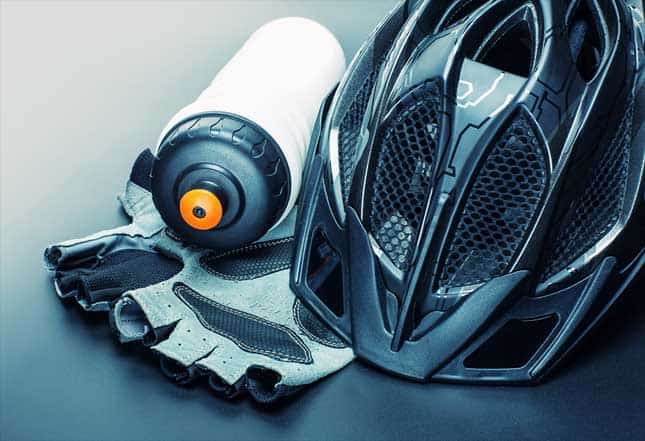
Helmet
This should go without saying, but you absolutely need to wear a helmet when you’re commuting. Whether you ride on a busy city street or down a placid bike path, you need to protect your skull. If you don’t have one, get one right away.
Two locks
Yes, you read that right. Not one lock, but two. You’ll need one U-lock and one cable lock. A U-lock is a thick metal lock that looks like the letter U with a bar across the opening. These are highly secure, almost impossible to cut, and resistant to tampering. A cable lock consists of a flexible metal cable.
Why do you need two? For two reasons.
First, because thieves are usually only prepared to deal with one type of lock (if any). They might be able to cut through your cable lock, but they probably won’t be able to deal with a hefty U-lock.
And second, because a U-lock will probably only be able to lock your frame (or maybe your frame and rear wheel) to a bike rack. Because front wheels are so easy to take off, that means a thief can make off with your wheel even if your frame is solidly locked. The cable lock can secure your front wheel.
Mini U-locks are great for commuters because they take up less space in your bag, but still work well with most bike racks.
Fenders
Even if you’re not riding in the rain and snow, bike commuting can be a messy business. Road grit, sand, dirt, water, and all sorts of other things will get kicked up by your wheels—and if you don’t have front and rear fenders, it’s going to get on your clothes.
A pair of fenders solves this problem.
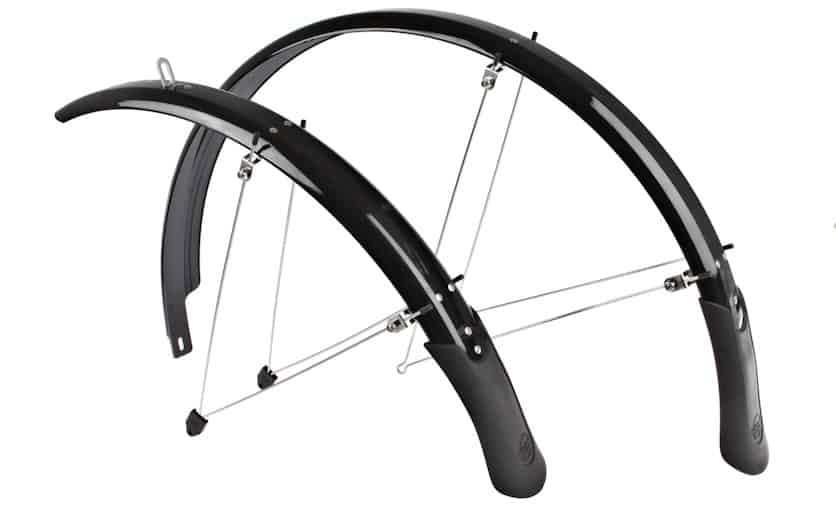
Even if your bike doesn’t accept full fenders, there’s a range of mini fenders available that clamp onto your seatpost or headtube. They won’t give you as much protection as a full fender,
but it’s definitely better than going without!
Rack
Technically, you can commute without a rack. But it’s almost a necessity, and so strongly recommended that we’re going to list it here.
A rack lets you strap cargo to your bike instead of your back, which will be more comfortable and help you stay cooler. And if you include panniers (which we’ll discuss in the next section), you’ll be able to carry even more stuff.
You can get a rack for $15 or $20, but if you spend a bit more, you’ll get a more solidly built rack that will support more weight.
It’s worth spending $30 or more.
And if you can avoid it, don’t get a rack that only clamps to your seatpost. A rack that bolts to your frame in one or more places will be much stronger (though some bikes can only accept racks that clamp to the seatpost).
Lights
Even if you’re only going to be commuting in daylight, you still need lights: they increase your visibility on the road. It’s especially important that you have a bright rear light, as that’s where most drivers will see you from. Most small lights are between 50 and 100 lumens, which will make you significantly easier to see.
Fortunately, a good set of front and rear lights is cheap, easy to install, and dead simple to use.
Most lights are rechargeable by USB, which means you can charge them at work if you need to. Make sure that your lights are always charged, especially if you ride in twilight or the dark!
If you need a light that’s going to help you see, you’re going to need a much bigger light. 600-, 900-, even 1200-lumen lights are available, and they really light up the road.
For comparison, a standard car headlight is about 700 lumens, with a standard high-beam around 1200. Unless you’re riding in absolute darkness, you don’t need to go higher than around 900 or so.
Keep in mind that these powerful lights are bigger, heavier, and more expensive.
That being said, if you need to light up the road, getting one for your helmet is a very worthy purchase.
Tools
You don’t need to be a bike-repair expert, but you should at least know how to change a flat tire if you’re going to commute by bike. You’ll need a tire lever, a CO2 cartridge, and an inflator (or a mini-pump). A multitool is also a good idea. Of course, these tools won’t do you any good if you don’t know how to use them. Ask a local bike mechanic to teach you how to fix a flat or watch this great video from the Global Cycling Network:
And be sure to practice a few times! You don’t want to get your first flat on the morning of an important meeting.
Baby wipes
This is the bike commuter’s secret weapon. If you’re hot when you get to work, baby wipes will clean you right up—the gentle cleansing solutions will get rid of sweat without irritating your skin.

They won’t solve the problem of 100-degree days, but when it starts getting warm, they’re a lifesaver.
If you’re willing to spend a bit more money, there are wet wipes that are made for cooling off after a workout. These wipes have ingredients like eucalyptus oil, lemon, aloe vera, and even degreaser.
No matter how much you decide to spend, make sure you have some sort of wet wipe with you when you commute.
It’s a game changer.
Commuting Accessories That are Nice to Have
Once you have a helmet, locks, fenders, a rack, lights, and a couple small tools, you’re ready to start commuting by bike! But there are a few other things you should consider.
Bell
Having a bell is especially convenient if you’re going to be riding on paths—saying “Coming up on your left!” dozens of time each day gets old. Any bike bell will do; just make sure it’s loud enough that people will hear you coming.
Panniers or Baskets
Being able to strap your bag onto the rear rack helps a lot in carrying your things, but if you want even more convenience, investing in panniers (which are grocery-sized bags that hang from your rear rack) or a basket will make things easier. There are lots of carrying options available; you can pick Commuter specific backpacks or panniers.
Cycling Computer or Cellphone Mount
If you’re curious about how far or how fast you ride, a cycling computer will tell you. You can get a cheap one for less than $50, but you can spend a lot of money for more information if you want. Power, cadence, and GPS features will run you more money, but they’ll tell you a lot of interesting facts about your ride!
You can also get a cellphone mount for your bike if you want to use a cycling app like Strava or MapMyFitness. These attach your phone to your stem, and are also useful if you want to get GPS directions from a maps app. Know about best budget bike computer
Commute-Friendly Clothing
If you decide that you don’t want to change clothes when you get to work, you’ll need some threads that are acceptable for the office, but still functional enough to ride in. Stretchy fabrics are great, and there are lots of companies making clothes intended specifically for commuting by bike.
No matter what you decide to wear, try it out a few times before you ride to work in it. You might find scratchy seams, hotspots or other sources of discomfort where you didn’t expect them! Read this guide to know more about dress for your cycling commute
Staying Safe on Your Commute
We’ve established that cycling to work isn’t especially dangerous—but there are still some things you’ll need to keep in mind to be as safe as possible. Most of it comes down to common sense, but it’s worth reiterating.
Here’s how to stay safe:
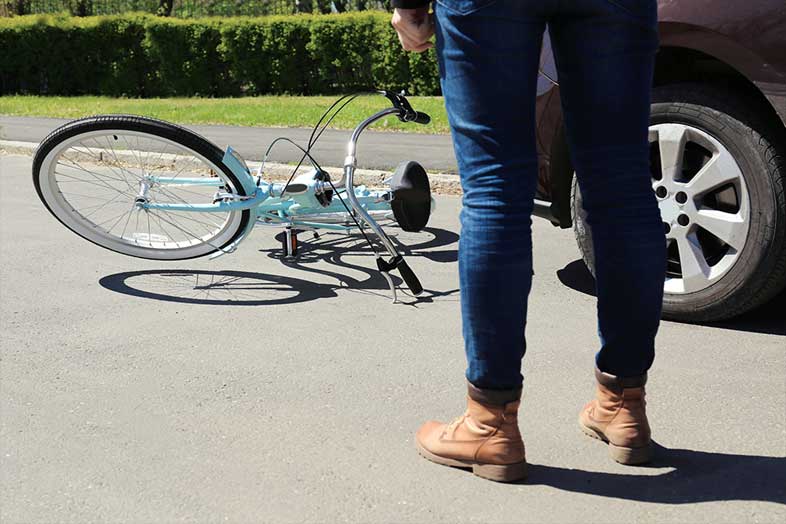
Wear a helmet
We already discussed this, but it’s so important that it’s worth mentioning again. A helmet can and will save your life in a crash. Even if you’re riding on bike paths where there are no cars, you need a helmet.
Bad conditions, careless cyclists, animals, and all sorts of other things can cause a crash, and hitting your head will have serious consequences.
Wear a helmet. No exceptions.
Use your lights
It might seem a little weird to use bike lights during the day, but they really do improve your visibility. A study in a Danish town found that daytime running lights on bikes reduce accidents. There are now some lights that are meant for daytime use, and these are ideal.
But any bike light will do. It’s also a good idea to use the blinking or strobing effect on your rear light, as it catches drivers’ attention even better.
Know the rules of the road
If you’re not familiar with riding on the road, you should brush up on what’s expected of cyclists.
Always ride on the right side of the road, and stay as far from traffic as is safe.Don’t get too close to parked cars or the curb. Signal your turns.
Move into the left turn lane at intersections where you’re going to turn left. Stop at all red lights and stop signs. Don’t pass other cyclists at intersections.
All of these are generally accepted rules, but your city or state may have specific laws that apply. Make sure you’re aware of these, too!
Plan safe routes
The best way to bike to work may not be the same way that you drive to work. Some routes will be faster or slower, while others will be more or less safe. The more time you can spend away from heavy traffic, the better.
If there are bike paths, take advantage of them! If you can skip roads that don’t have shoulders, do so.
This is where doing a pre-ride can be very helpful. Ride your route on the weekend to see how safe you feel on the roads you’ve chosen. If it doesn’t seem safe, find another route!
Practice defensive riding
Just like driving, riding your bike defensively can keep you safe. Make sure to be very aware of your surroundings, pay extra attention to drivers who might not see you, and always be ready to hit the brakes (when it’s safe).
BicycleSafe.com has a lot of tips for new urban riders, so be sure to check that out.
For the most part, however, it comes down to being aware of your surroundings and ready to react. This comes with experience—so if you haven’t done much urban riding, don’t worry. You’ll start getting more comfortable after just a few rides!
Commuting by Bike in Four Seasons
Many people commute by bike in two or three seasons, but there’s no reason you can’t do it all year.
Keep reading for tips on how to make your commute more successful at any time of year.
Spring
Riding in the spring is generally pretty easy, especially if you’re far enough south that you don’t have to worry about snow. Usually the primary concern with spring riding is staying dry; there’s often a lot of water on the ground, and you might have some rainy days, as well.
The first thing to keep in mind is that your tires need to be ready for wet riding. You can find wet-weather or all-weather tires for any bike; these usually have channels that direct the water out from under the tires, and maybe some small tread to increase traction.
You’ll still want to be careful going around corners and try to not slam on the brakes, but having the right tires will go a long way toward keeping you rightside-up.
Beyond that, your clothes are your biggest concern.
You may want to invest in some rain paints and a waterproof (or at least water-resistant) jacket to keep you dry during your commute. You can also get water-resistant booties to put over your bike shoes to keep water from soaking your feet.
Not only is getting wet annoying when you’re on your way to work, but it can also be really cold. So make sure you have the right gear to keep you dry.
You may also want to invest in waterproof bag or two to carry your computer and any other devices to work.
Other than staying dry, riding in the spring is pretty easy! If you live somewhere that gets occasional spring snowstorms, be sure you’re ready for those, too (check out the Winter section below for some tips on riding in the snow).
Summer
Bike commuting in the summer is great—the roads are clear, there’s plenty of light, and most places are relatively dry. In the summer, the issue you’ll be dealing with is heat. It’s really easy to get hot while riding in the summer.
Leave your house as early as possible to get your commute in before the temperature starts to rise too aggressively, and be sure to drink plenty of water before, during, and after your ride.
Again, clothes are your best friend for this season. Lightweight, well-ventilated clothing will keep you much cooler than your work clothes. There are cycling clothes that can double as work clothes, but you may want to consider changing when you get to work if the temperature starts to get too high. Buying a higher-end helmet will also give you more ventilation, which makes a big difference, too.
We mentioned baby wipes before, and this is exactly when they’re most useful. Keep a pack of baby wipes in your bag, and wipe yourself down with them when you get to work. It seems strange, but it’s a classic tool for bike commuters!
Fall
If there’s any season that’s perfect for biking to work, it’s the fall. Cooler temperatures, no snow, beautiful colors . . . it’s the best. The biggest issue you’ll come across in the fall is occasional cold mornings, especially if you leave early. The sun comes up later, which keeps the temperature down longer.
Layers are key here—many cyclists prefer arm and leg warmers that they can take off during their ride, which can help you from overheating after a cold start. Light jackets, light gloves, and any other items of clothing that are easy to take off will be especially useful in the fall.
Other than that, enjoy your commute! Winter is coming . . .
Winter
Yes, you can ride your bike to work in the winter. It might not sound like a whole lot of fun, but there’s nothing else like it—you get to feel like a bad-ass for riding your bike in the winter, and you continue saving money and doing good things for the environment in your health. It’s a win all around.
But you’ll need to make some specific preparations if you’re going to ride in the winter.
Again, you’ll need tires that fit this particular type of riding. You want as much grip as possible in the winter, as snow and ice will put you flat on the road in no time. Tires with lots of deep treads—or, even better, metal studs—will get you through light snow and even some ice more safely. You’ll still want to keep your speed down if the conditions are bad.
It’s also a good idea to put bigger tires on your bike if you can—many winter commuters ride on fat bikes with tires of up to 5” in width. You probably won’t be able to go that wide, but be sure to maximize the amount of rubber you’re putting on the road.
To stay warm, you’re going to need a lot of clothes. The wind chill while you’re riding in the winter can be quite fierce. A hat that fits under your helmet, thick cycling gloves, tights, a warm jacket, and booties to cover your feet will all help. Of course, the amount of clothing you need to wear depends on where you are. A winter cyclist in Florida won’t be wearing the same thing as a winter cyclist in Minnesota!
Your best bet here is to talk to someone who’s commuted on their bike through a winter where you live. They’ll be able to give you lots of advice on the gear you need, winter road conditions, and other useful information.
You’ll also want to winterize your drivetrain. Make sure to clean your chain, cassette, and chainrings regularly, as salt will damage them. Applying a water-resistant lubricant on a regular basis will help, too. Bicycling’s 7 Easy Ways to Winterize Your Bike has some recommendations on these matters that you may find helpful.
And, of course, if it’s just too nasty, take a couple days off of bike commuting. There’s no sense getting hurt or risking frostbite!
Your First Practice Ride
Once you’ve gotten your bike and accessories ready, you might think you’re ready to start commuting full-time. And you’re almost right. But there’s one important step left to take: your first practice ride.
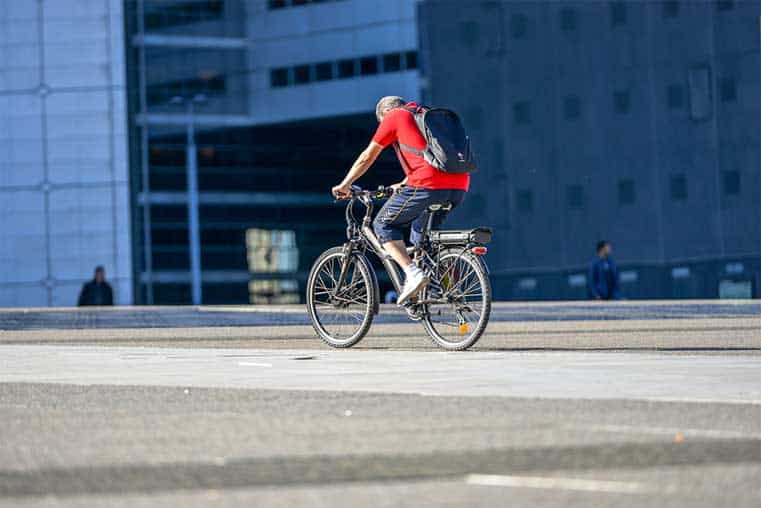
To get a feel for how long your commute takes, which route is the best, and if there’s anything you need to be aware of, you’ll want to ride your route to work on a day that you don’t have to go in. Most people do this on weekends, but you could also do it on a holiday or a personal day.
Here are the things you’ll want to pay attention to:
Your route
You might think that the best way to bike to work is to take the same roads you drive on. But that’s often not the best choice, especially if you do any highway driving. Use your practice ride to find a series of surface streets that will get you to work safely. Your first priority is staying safe. Your second is to get to work as quickly as possible.
Getting a little creative can help here. Going a block or two out of your way can help you avoid busy intersections, roads with no shoulders, high-speed-limit areas, and roads with lots of obstacles (like potholes).
For these reasons, you might want to do a few practice rides before you actually start commuting. The best route to work isn’t always obvious, and you’ll probably want to make a few changes.
Here is your Route planning tips to go Quick and Safe.
The time
No matter how well you think you know how long it will take you to bike to work, there’s a good chance your estimate will be off. Stoplights are timed for cars, some intersections take a long time to cross, and even small hills can change your average speed more than you think.
Of course, how long it takes you to get to work will change with the traffic, too, and that’s difficult to judge on a weekend or holiday. But your practice ride should give you a better idea of what to expect.
Here is some effective tips to make your bike commuting faster
And when you first start commuting by bike, you should leave earlier than you think you need to. Give yourself at least an extra 15 minutes on the first few days, and pay close attention to how long your commute takes.
Use these tips to make your daily commute as quality training.
Traffic
Again, this is difficult to judge on weekends and holidays. But try to get a feel for how much traffic you’ll encounter on your ride. When you’ve been bike commuting for a while, riding in traffic will feel very natural. But beginners may be nervous about riding in close proximity with cars, especially on roads where the speed limit is higher than 25 or 30 miles per hour.
Pay attention on your practice ride to how much traffic is on each of the different roads that you ride on. Even if there’s not as much traffic on the weekends, you should be able to determine which roads will be busiest. And if you don’t feel comfortable riding on those roads, you can change your route.
Once you’ve completed a practice ride or two, you’ll have a much better idea of what to expect from your bike commute. Make any changes that you need to, and you’re totally ready to start biking to work every day. Welcome to the world of bike commuting!
Start Biking to Work Today!
Becoming a cycle commuter is a great step toward a healthier, happier life. And if you have a bike, you can start today. Buying accessories and planning routes is great, but the sooner you can start, the better.
And don’t be afraid to become a bike commuting evangelist! Getting more people at your workplace to commute by bike means an even healthier environment and workforce. People might think you’re crazy at first, but once they see how much better your work life has become, they’ll become intrigued . . .
and they might even ask you to help them out.
Now you have all the knowledge you need to start your bike commute, from accessories to safety to all-season riding. What are you waiting? Start biking to work today!

